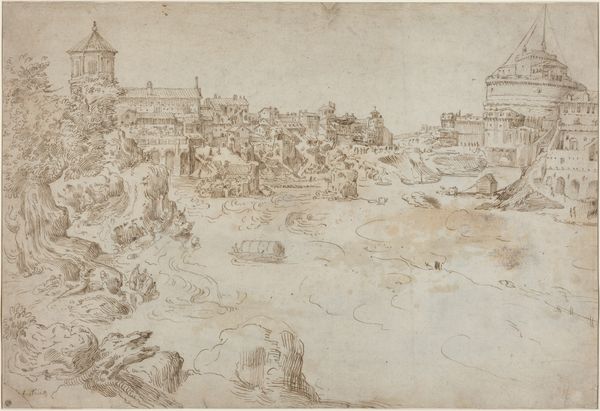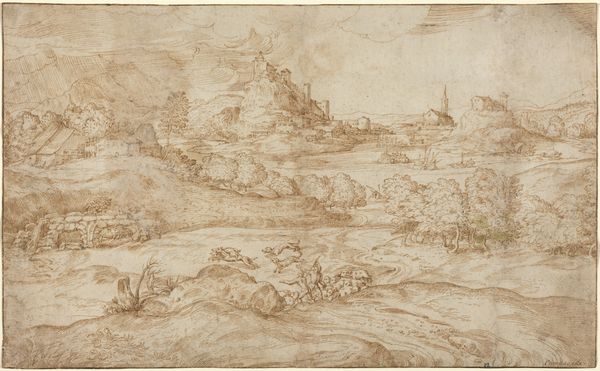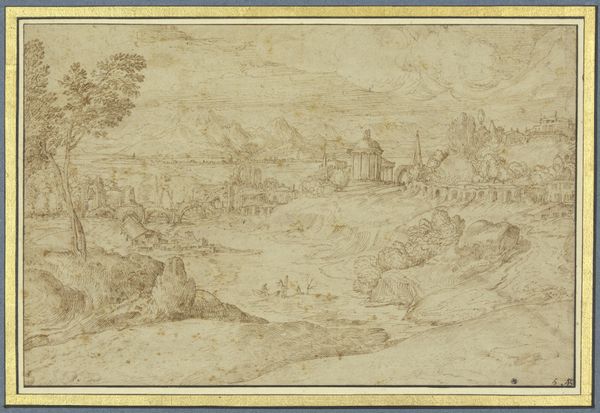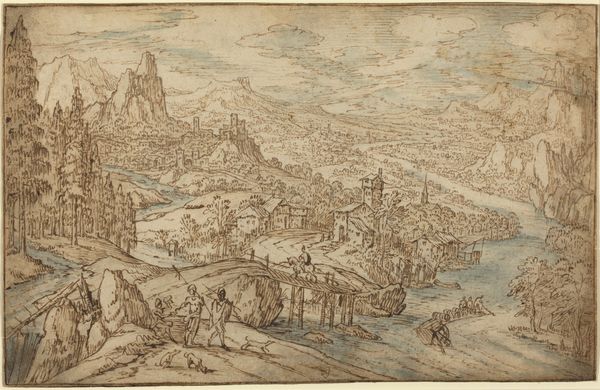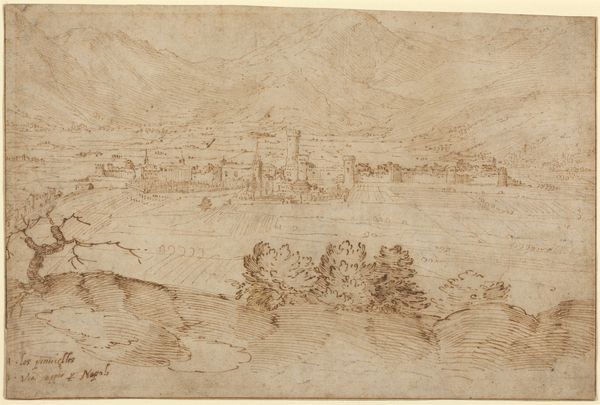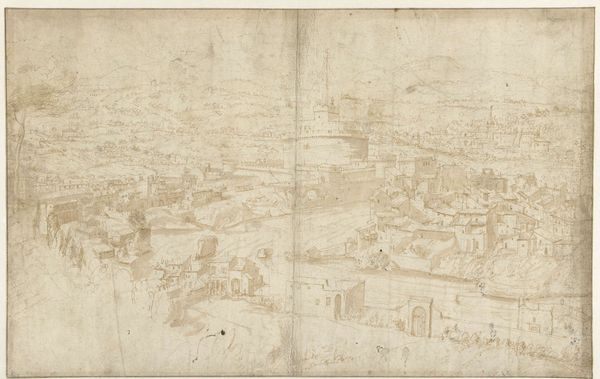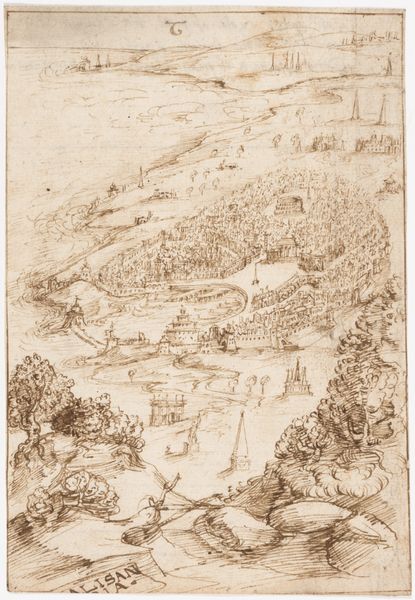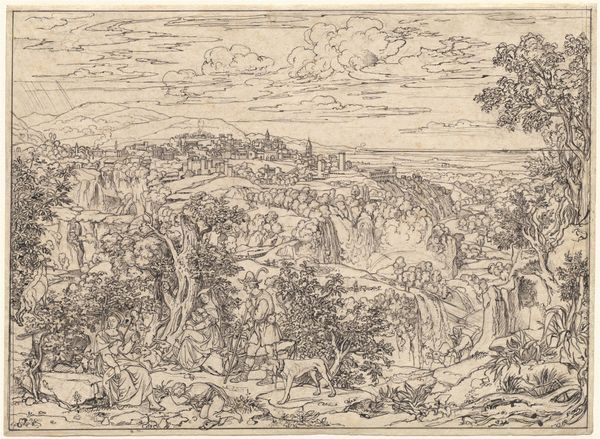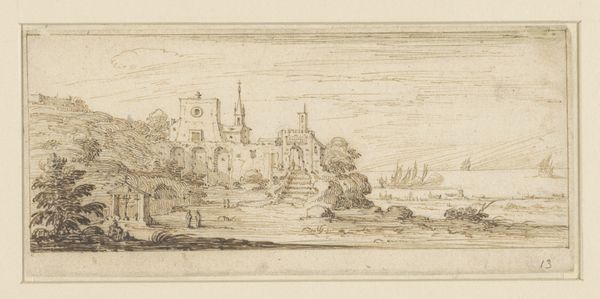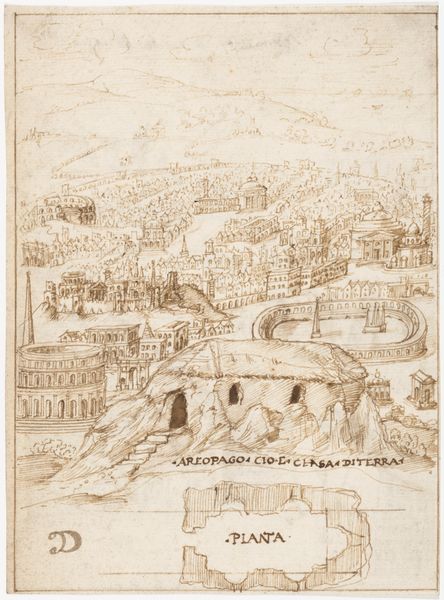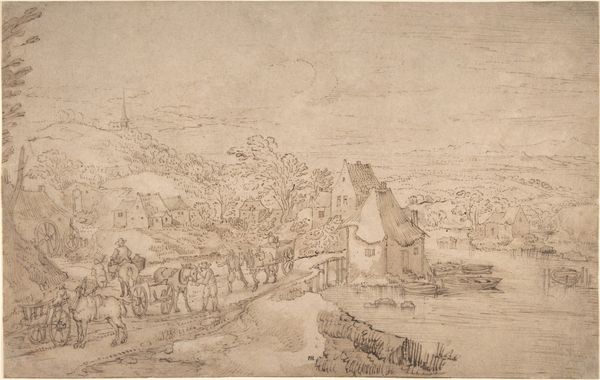
drawing, paper, ink
#
drawing
#
landscape
#
paper
#
ink
#
genre-painting
#
italian-renaissance
Dimensions: height 286 mm, width 425 mm
Copyright: Rijks Museum: Open Domain
Editor: So, this drawing is entitled "Landscape with a Fortified Town in the Distance" by Annibale Carracci, dating from around 1585 to 1587. It’s done with ink on paper, and I have to say, it’s really detailed. It has quite a layered effect, which really pushes the eye to explore, what is your reading of this drawing? Curator: It's a fascinating window into the evolving role of landscape within the socio-political climate of late 16th-century Italy. You see, landscape art wasn't merely about representing nature; it was about power, control, and the artist’s position in reflecting those constructs. Notice the fortified town dominating the horizon. What does that signify to you? Editor: Control, surely. A sort of silent dominance. Almost as though the artist were trying to create a sense of intimidation. Curator: Precisely! These fortified structures are expressions of wealth and authority. In the context of the Italian Renaissance, artists were becoming increasingly aware of their role in shaping public perception. By placing that strong town in the distance, he is showing control. Consider where Carracci situated the town, does it imply authority and access, or something more subdued? Editor: The position being further away hints at how society was structured back then, wealth and power existing far above and separate from ordinary citizens going about their daily lives in the foreground. Curator: Yes, the genre elements highlight the quotidian routines which gives us context of 16th-century society and cultural events. So Carracci presents us with not just an aesthetic creation, but a profound social statement through imagery, don't you think? Editor: That’s a compelling thought. I initially saw it as a simple landscape, but your reading makes me understand that, actually, there is much more to this piece. Curator: Indeed! Recognizing these cultural contexts adds depth and complexity to our understanding of the art.
Comments
rijksmuseum about 2 years ago
⋮
During a study trip in northern Italy, Annibale Carracci became fascinated by the landscape drawings and prints of Domenico Campagnola. Like Campagnola, Carracci created panoramic landscapes with swift, deft pen lines and parallel hatching. In them, he included telling observations of everyday life, as in this drawing of a resting peasant family with sheep in the foreground and figures under the loggia of a house with a smoking chimney.
Join the conversation
Join millions of artists and users on Artera today and experience the ultimate creative platform.
